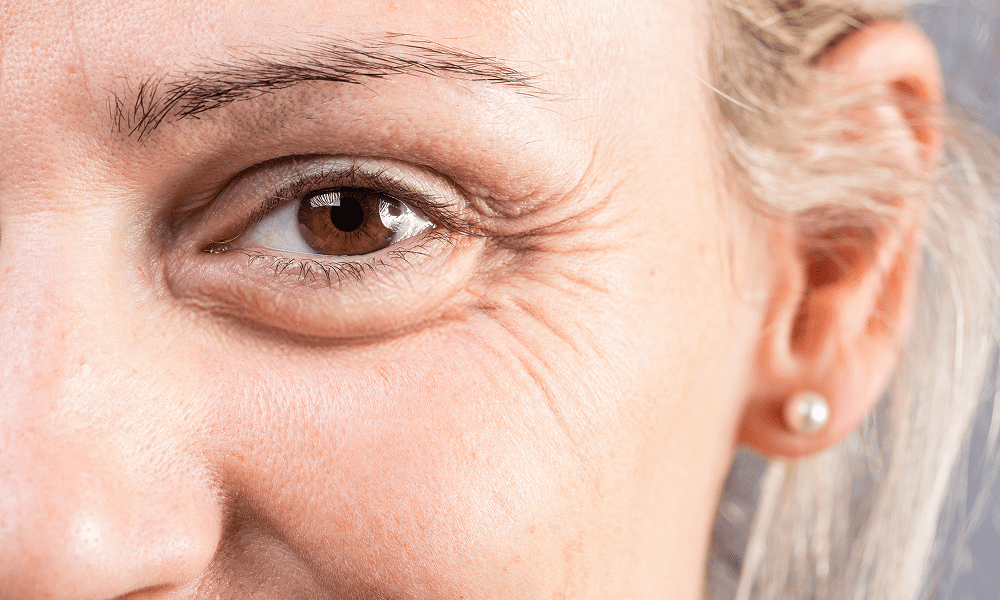Crease Between Eyebrows: Causes and Effective Treatments
The crease between the eyebrows, commonly known as frown lines, is a widespread skin concern that affects many people as...
Read More
Ever caught a glimpse of the little crinkles at the corners of your eyes after a long, laughter-filled day? These “crow’s feet” might tell stories of joy, but for many, they’re also the first signs of time settling in.
If you’re searching for the best treatment for crow’s feet, feeling unsure which route actually works, or just hoping to get rid of crow’s feet for real, finally, this guide is made for you. With so much exaggerated advice out there, finding honest, expert-backed answers isn’t easy. Discover what truly helps, from top dermatologists and everyday people who’ve seen results.
Short answer: not always especially deep, long-established lines. But you can significantly reduce their appearance and often prevent them from deepening. Some treatments erase very fine lines; others soften and fill deeper creases.
The choice depends on whether your crow’s feet are mainly dynamic (caused by muscle movement) or static (visible even at rest).
These are the low-risk, everyday things that make a visible difference over time.
Use a broad-spectrum SPF every day on the face and around the eyes (choose formulas made for the eye area). Sun damage accelerates collagen breakdown, so sunscreen is the easiest proactive step.
Retinoids increase cell turnover and encourage collagen production, which helps plump shallow lines. Start slowly (every other night) and use products formulated for the eye area or follow a clinician’s advice for prescription-strength options. Expect gradual improvement over weeks to months.
Hyaluronic acid serums and good moisturisers keep the skin plump and reduce the “shadow” that makes lines look deeper. These don’t erase deep wrinkles, but they make a noticeable visual difference for early lines.
Ingredients like peptides and vitamin C support collagen health and protect against environmental stressors. They’re supportive treatments rather than quick fixes.
Reality check: If your goal is to get rid of crow’s feet overnight, at-home care won’t do that. These steps are the foundation and will improve mild lines and slow progression.
If your crow’s feet appear mainly when you smile or squint, botulinum toxin injections are the most reliably effective option. They relax the orbicularis oculi muscle that causes the lines, so the skin stops creasing as sharply.
Results typically appear within a week and last about 3–4 months; regular treatments keep lines minimal. This is often described as the single most effective treatment for crow’s feet.
Pros: Fast, minimal downtime, excellent for expression lines.
Cons: Temporary (maintenance needed), requires precise placement by an experienced clinician to avoid affecting eyelid movement.
Dermal Fillers can “fill in” deeper lines and restore volume lost around the eye pocket. When used carefully by an expert, hyaluronic acid fillers smooth the area and give an immediate improvement. Not everyone is a candidate for the under-eye area, which is delicate, and filler placement must be conservative to avoid lumps or Tyndall effect.
Pros: Immediate result, works on deeper lines.
Cons: Riskier around the eye (requires an expert injector). Potential side effects include bruising or temporary swelling. Results last from months to a year, depending on the product.

Glycolic acid or light TCA/Jessner peels applied around the eye (by a trained professional) remove the top layer and stimulate regeneration, softening fine lines. These are best for early crow’s feet and overall texture improvement.
Pros: Improves skin texture and mild lines; can brighten.
Cons: Multiple sessions may be needed; not ideal for very dark skin tones without professional guidance (risk of pigmentation).
Microneedling creates controlled micro-injuries that trigger collagen production. Collagen remodelling reduces line depth over a series of sessions. Radiofrequency-enhanced microneedling (e.g., Morpheus8) incorporates thermal energy to achieve deeper collagen tightening.
Pros: Effective for stimulating long-term collagen; suitable for moderate lines.
Cons: Requires downtime for a few days; multiple sessions.
Fractional lasers (e.g., Fraxel) target deeper skin layers to promote collagen remodelling. Effective for deeper wrinkles, but also carries a higher cost and longer recovery than peels or microneedling.
Pros: Strong collagen response, capable of addressing deeper creases and pigmentation.
Cons: Costly, more downtime, careful candidate selection required.
Injectable or topical regenerative therapies, such as PRP, can help improve texture and support collagen over time. Evidence varies, and they’re often used alongside other treatments.
If you’re wondering how to get rid of crow’s feet for good, the most reliable place to start is with an experienced injector and targeted clinic treatments. Injectables remain the gold standard for dynamic lines, while fillers, microneedling, and laser resurfacing offer deeper correction for static wrinkles. Combine these with consistent at-home care, sunscreen, retinoids, and hydration to maintain smoother, firmer skin over time.
Crow’s feet don’t have to be permanent. With the right blend of professional treatments and daily skincare, you can keep your eye area looking refreshed and naturally youthful for years to come.
What is the best treatment for crow’s feet around the eyes?
Botulinum toxin is the most effective for dynamic crow’s feet, while fillers, lasers, and microneedling help with deeper lines.
Can you get rid of crow’s feet permanently?
Not completely, but regular treatments and good skincare can significantly reduce their appearance long-term.
Do creams really work for crow’s feet?
Retinol and peptide creams help improve texture, but they can’t remove deep wrinkles on their own.
How much does crow’s feet treatment cost?
The cost of injectables varies, starting from around £150–£300 per session, depending on the clinic and dosage.
At what age do crow’s feet start to appear?
Most people start to notice fine lines in their late 20s to early 30s, often due to facial movement and collagen loss.